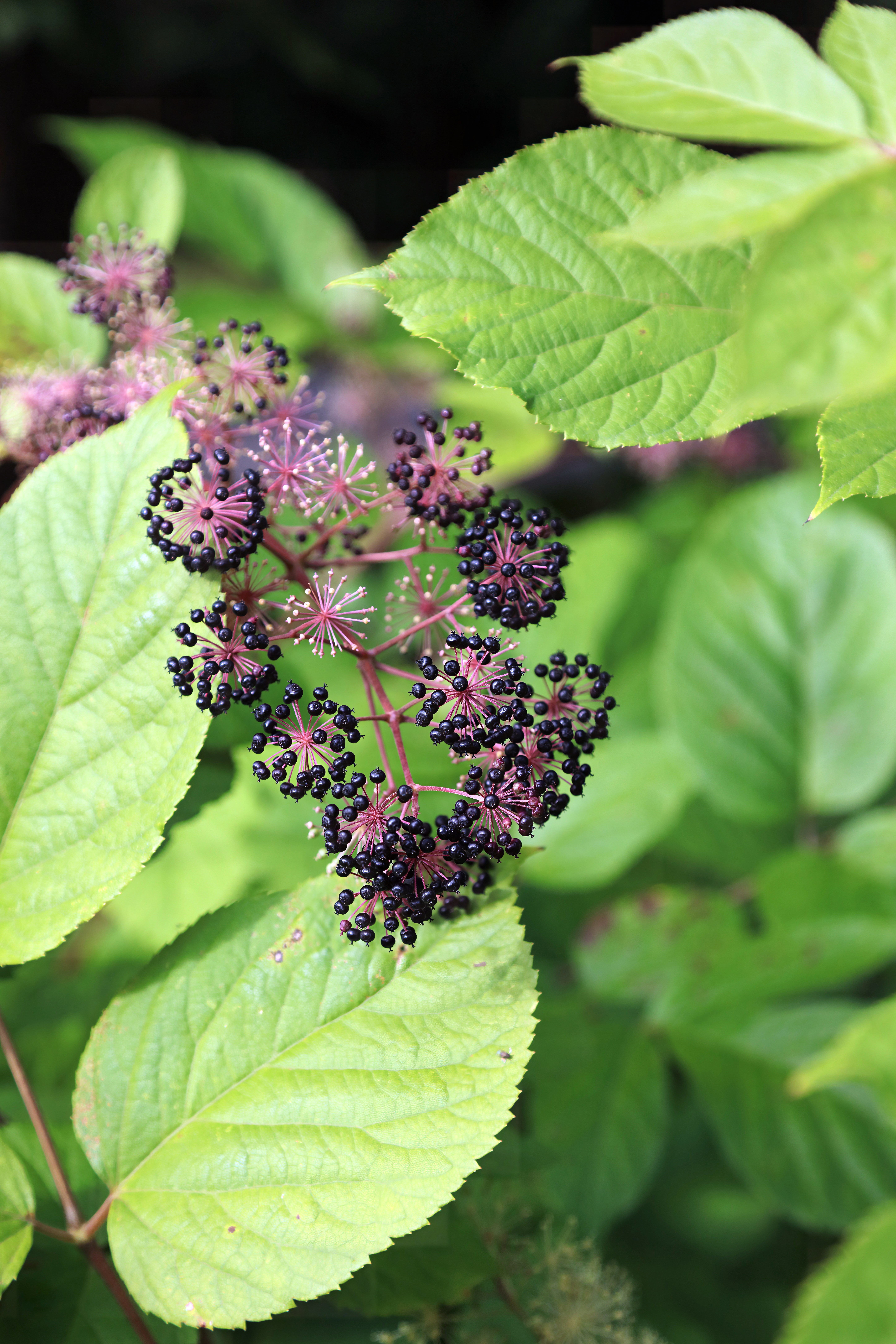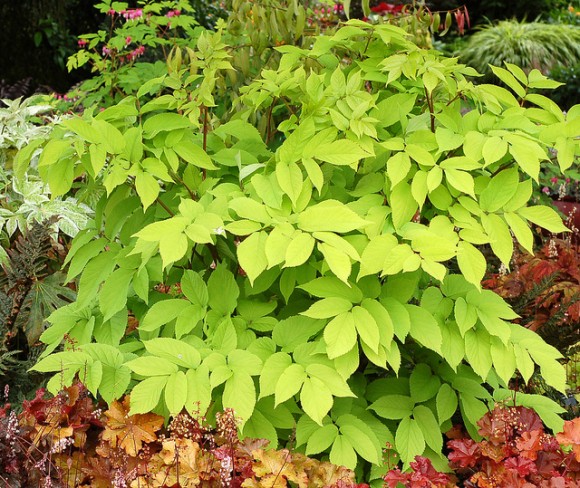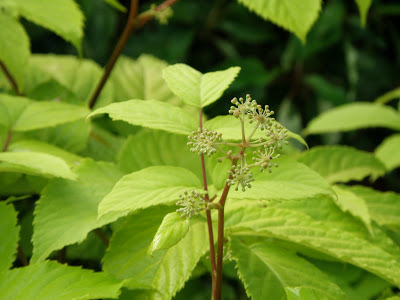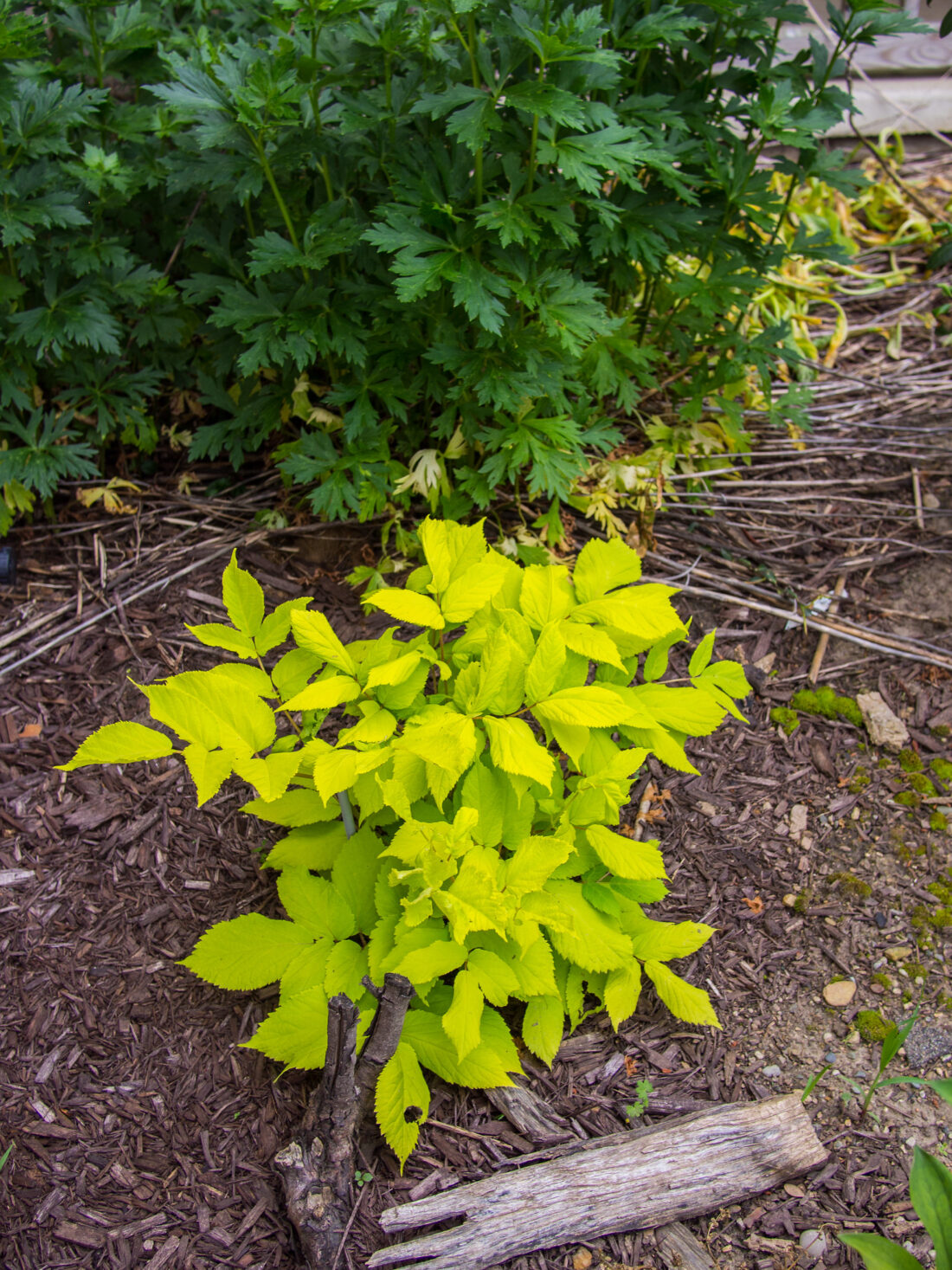A number of years in the past, I planted an Aralia cordata ‘Solar King’ in our shade backyard, and ever since, I’ve been questioning why I didn’t do it sooner. This plant is a kind of hidden gems—one thing you don’t see in each backyard heart, but when you plant it, you marvel the way you ever gardened with out it.
‘Solar King’ is a shiny, golden-leaved number of Aralia cordata, also referred to as Japanese spikenard. The title alone—‘Solar King’—tells you what it’s essential to know. It’s a beacon of sunshine in a shady backyard, with chartreuse foliage that virtually glows. Even in deep shade, the place different gold-colored crops may fade to inexperienced, ‘Solar King’ holds its coloration remarkably effectively.
The primary time I noticed it, I needed to do a double take. The leaves are daring and compound, nearly like a tropical plant, but it surely thrives in temperate gardens. It emerges in early spring with a powerful, mounded behavior, rapidly reaching three toes tall and extensive, typically even bigger if given the best circumstances. By mid to late summer season, the plant produces sprays of small, white flowers, that are adopted by berries in late summer season into early fall that birds love.

Why ‘Solar King’ is a Should-Have for Shade Gardens
Most shade-loving crops are typically both textural and inexperienced (like ferns and hostas) or delicate and fleeting (like bleeding hearts). ‘Solar King’ is neither. It’s daring, architectural, and surprisingly low-maintenance. It doesn’t simply fill area—it transforms a shady nook with its shiny foliage and dense, shrubby type.
Some key advantages of rising ‘Solar King’ in your backyard:
- Thrives in shade – In contrast to many golden-leaved crops, which fade in deep shade, ‘Solar King’ holds its coloration effectively, including brightness to darker areas.
- Quick-growing and adaptable – Reaches full dimension inside a couple of seasons and is surprisingly drought-tolerant as soon as established.
- Late-season curiosity – The fragile white flowers appeal to pollinators, and the deep purple berries present meals for birds.
- Deer-resistant – Whereas no plant is totally deer-proof, Aralia cordata just isn’t excessive on their menu, making it an important alternative for gardens with shopping strain.
Different Aralias to Think about
For those who like ‘Solar King,’ you may need to discover a number of the different aralias that deliver dramatic foliage and robust construction to the backyard. The genus Aralia contains each herbaceous perennials and woody shrubs, with species starting from ground-hugging natives to towering tropical-looking giants.
- Aralia spinosa (Satan’s Strolling Stick) – A local North American species with spiny stems, large compound leaves, and cloud-like clusters of white flowers in summer season. It’s a daring assertion plant, however be warned—it suckers and may develop into a bit unruly within the improper spot.
- Aralia elata (Japanese Angelica Tree) – Just like A. spinosa, however with a extra refined behavior. The variegated cultivar ‘Silver Umbrella’ is especially beautiful, with shiny white-edged foliage.
- Aralia racemosa (American Spikenard) – A herbaceous native relative of ‘Solar King’, this plant dies again in winter however emerges in spring with giant, tropical-looking foliage and clusters of small crimson berries liked by wildlife.
- Fatsia japonica – For those who stay in a milder local weather (zones 8-10), this evergreen aralia relative is a unbelievable tropical-looking choice for shade gardens, with enormous, shiny leaves that add drama year-round.


The best way to Develop and Look after Aralia cordata ‘Solar King’
Top-of-the-line issues about Aralia cordata ‘Solar King’ is how straightforward it’s to develop. Regardless of its unique look, it doesn’t require fussy circumstances to thrive.
- Gentle: Finest partly shade to full shade. It’s going to tolerate some morning solar, however an excessive amount of direct gentle can bleach the leaves.
- Soil: Prefers moist, well-drained soil, however it could possibly deal with drier circumstances as soon as established.
- Watering: Common watering through the first rising season helps it set up deep roots.
- Spacing: Give it not less than three toes of area—this plant fills out rapidly and doesn’t wish to be crowded.
- Winter Hardiness: Hardy in USDA zones 3-9, which means it could possibly deal with a variety of climates. It dies again to the bottom in colder zones however returns reliably every spring.

The place to Use ‘Solar King’ within the Backyard
Due to its daring foliage and adaptable nature, ‘Solar King’ is a unbelievable addition to quite a lot of backyard settings. Think about using it:
- As a focus in a shade backyard – The brilliant foliage offers distinction towards darker greens.
- In combined borders – Pairs effectively with hostas, ferns, and astilbes for a layered look.
- In woodland gardens – Blends fantastically with native crops and offers late-season flowers for pollinators.
- As a backdrop plant – Its dimension and dense behavior make it an important backdrop for lower-growing shade perennials.
I’m excited to see how ‘Solar King’ continues to carry out in my backyard. It’s already proving to be probably the greatest shade crops I’ve ever grown, and I want I had planted it sooner. For those who’re searching for an easy-care, high-impact plant to brighten up a shady area, that is one to think about.
Do you develop any aralias in your backyard? Let me know which of them are your favorites.
—Rodney
Photographs: Terra Nova Nursery flickr, gardenshorts.com
